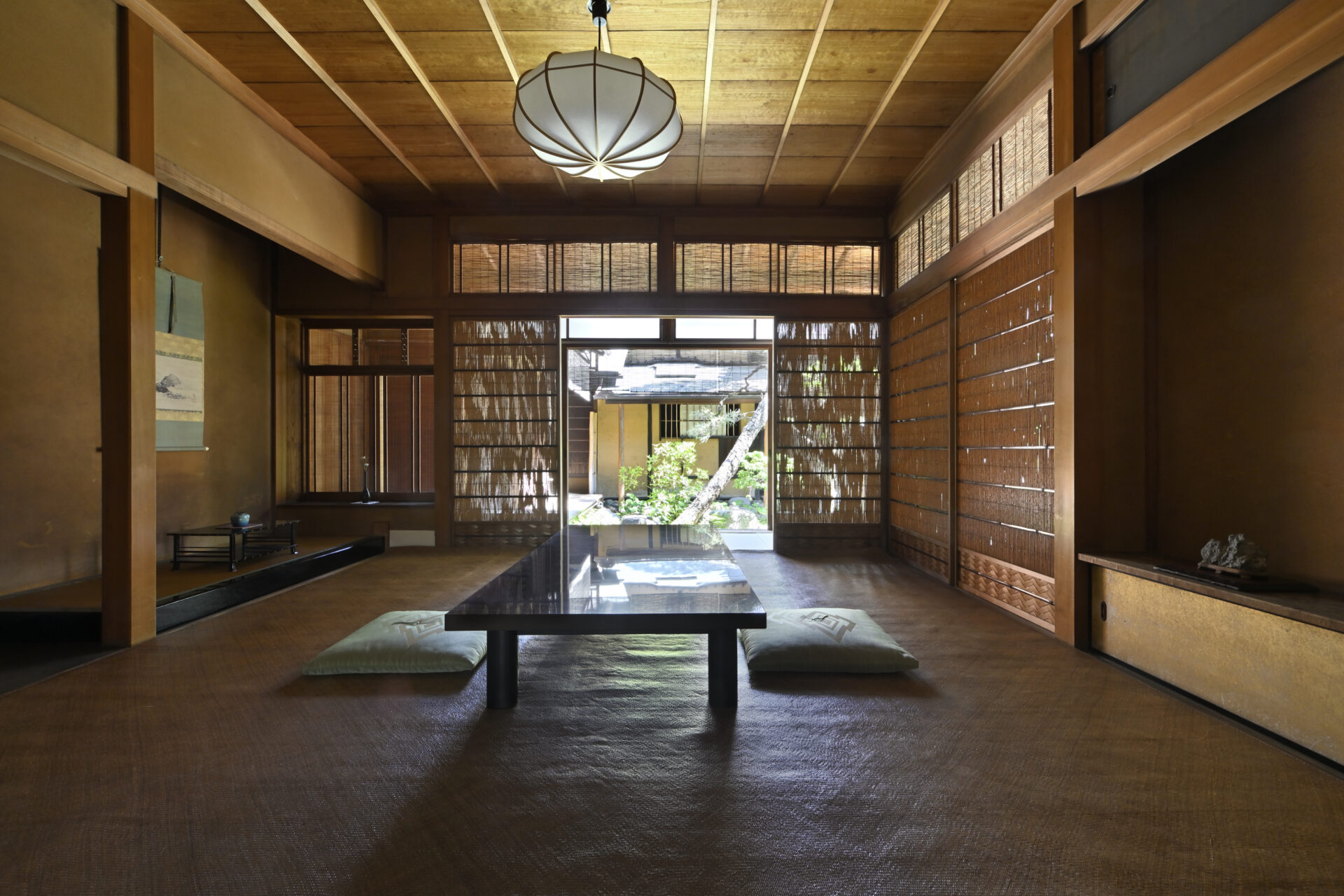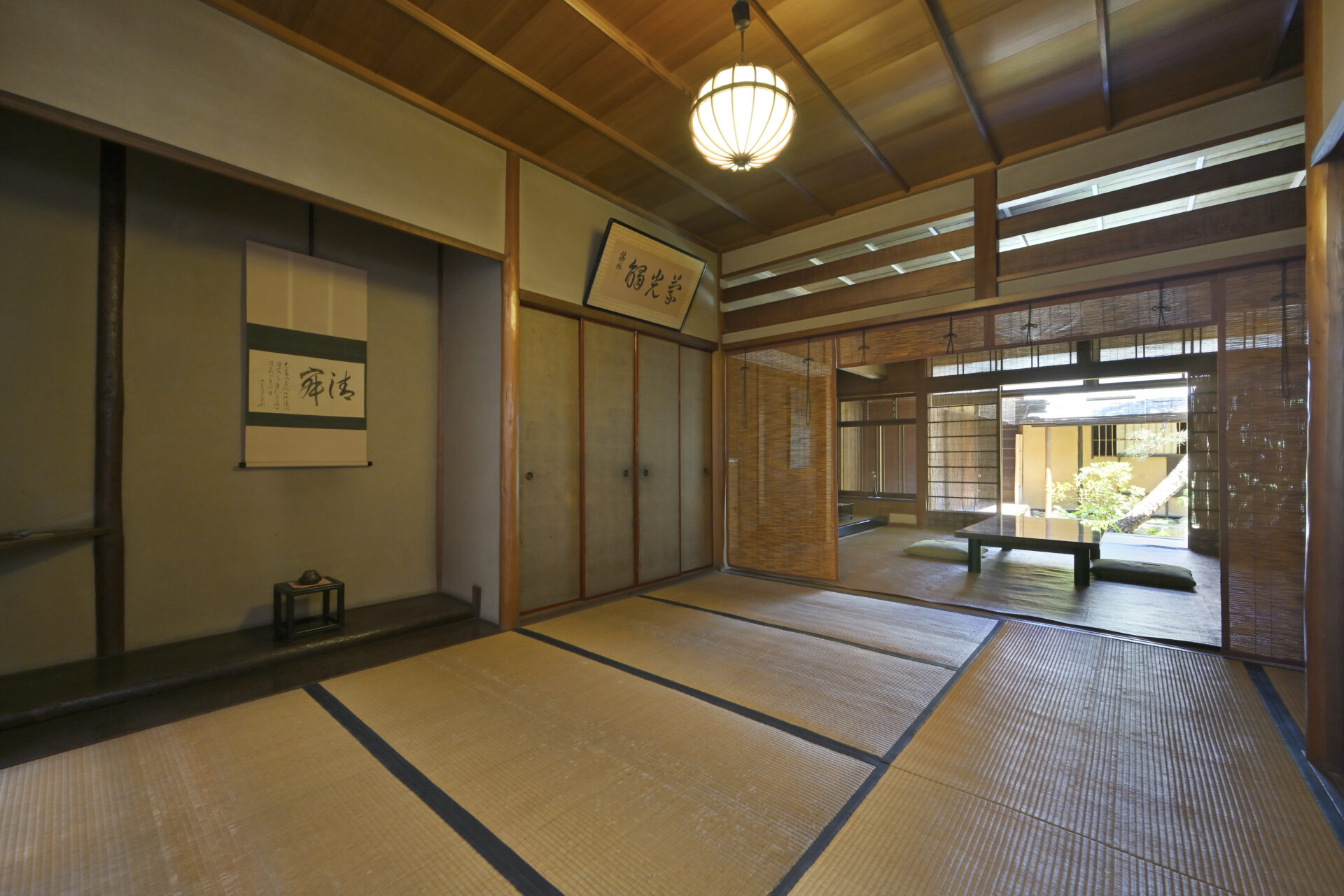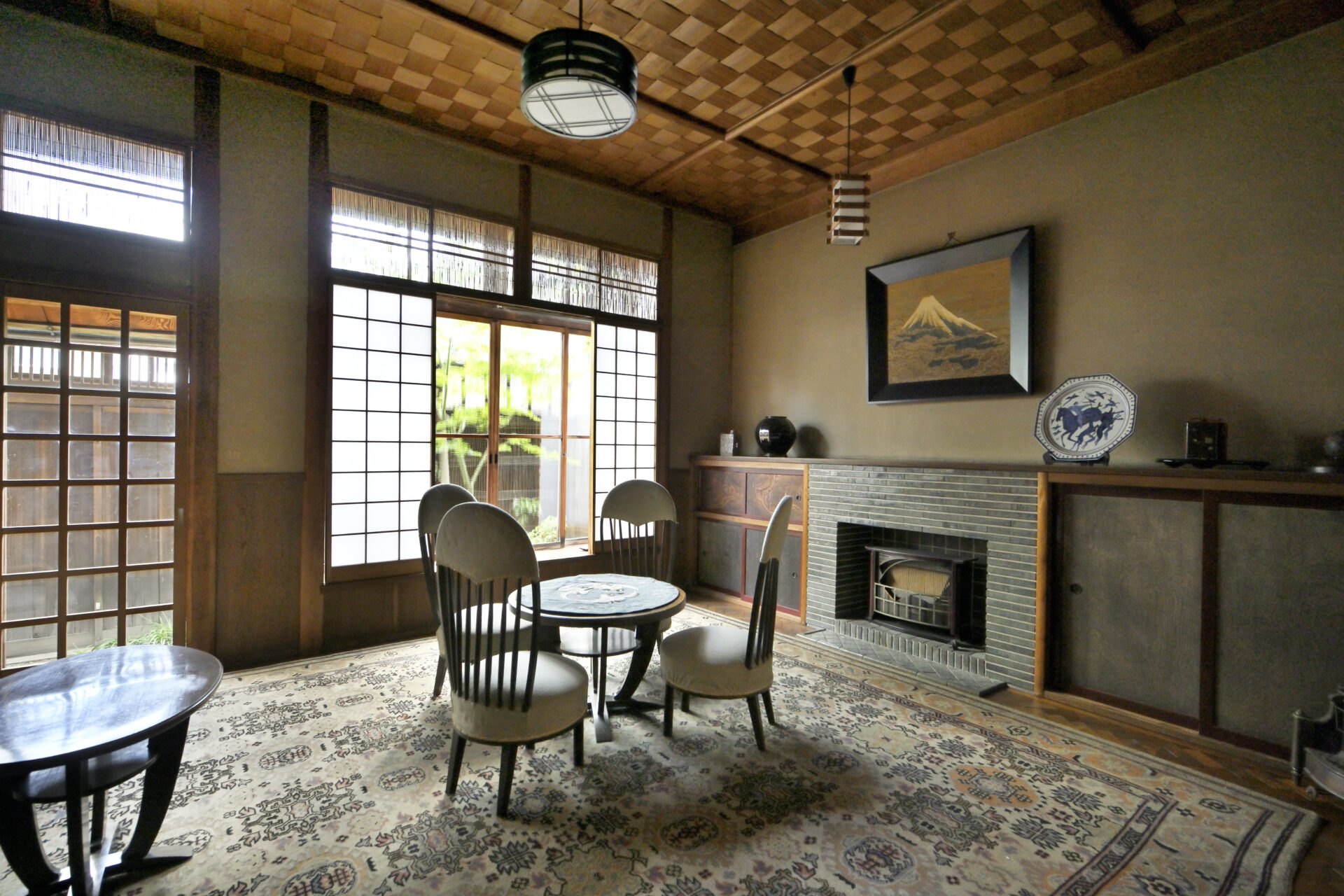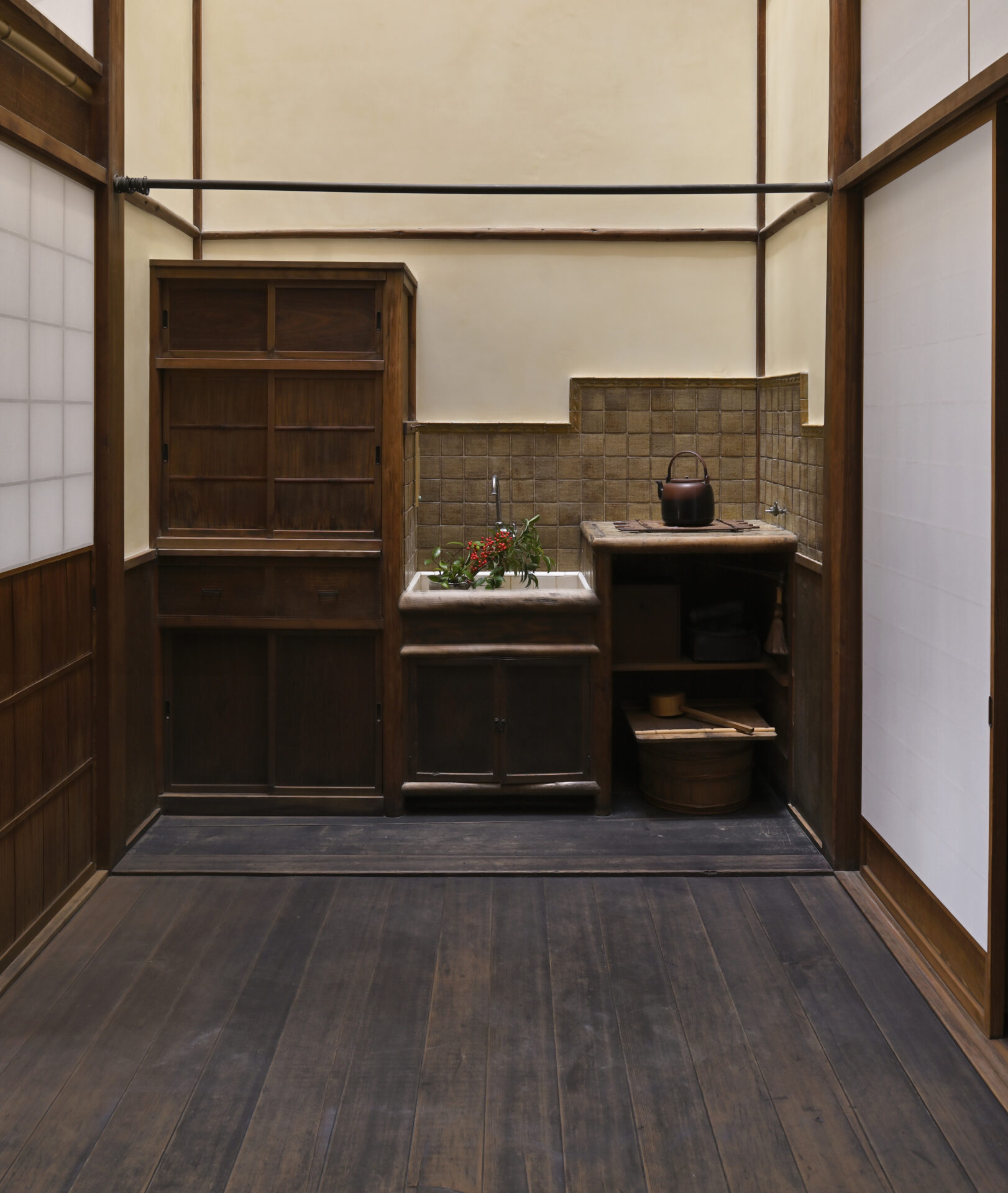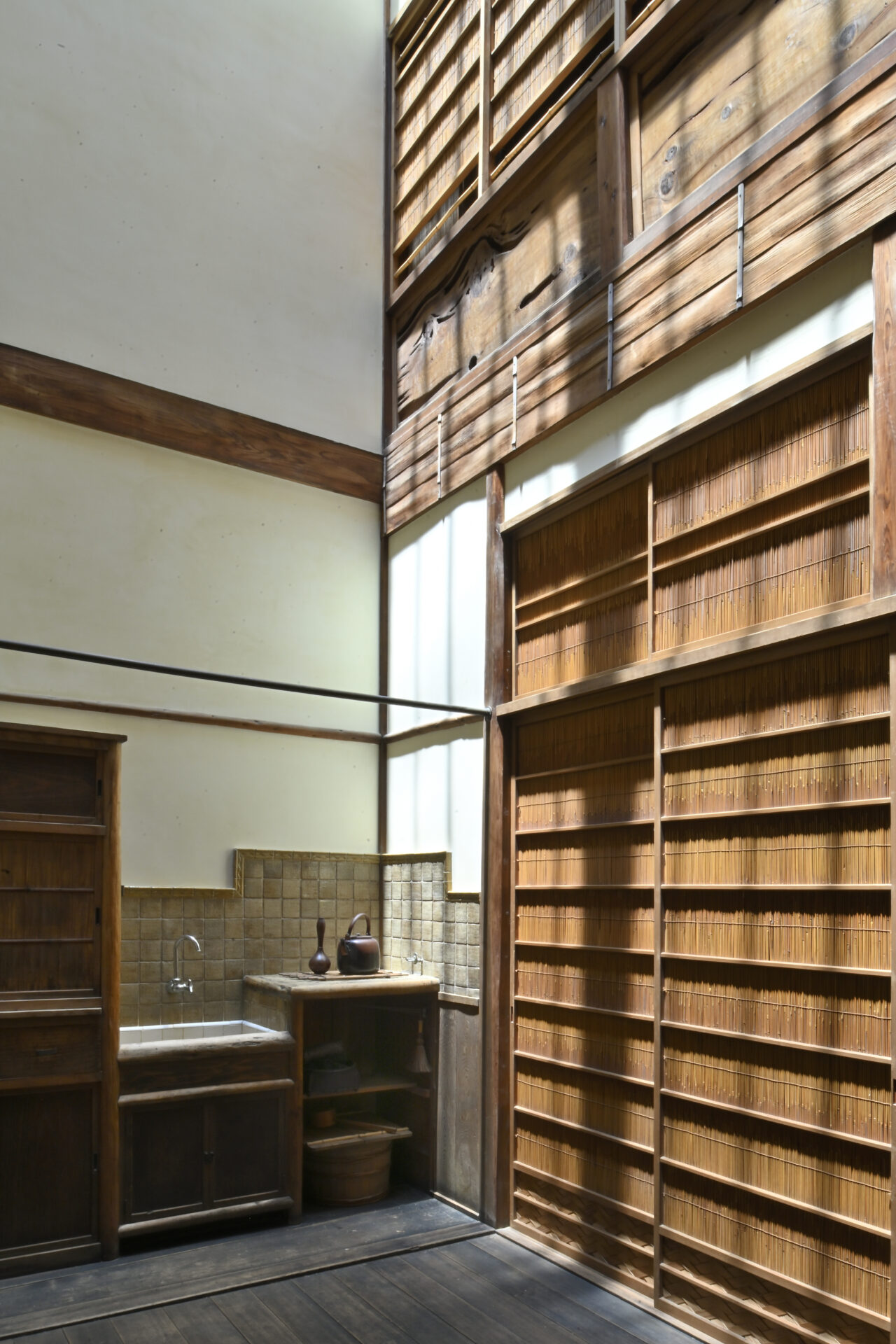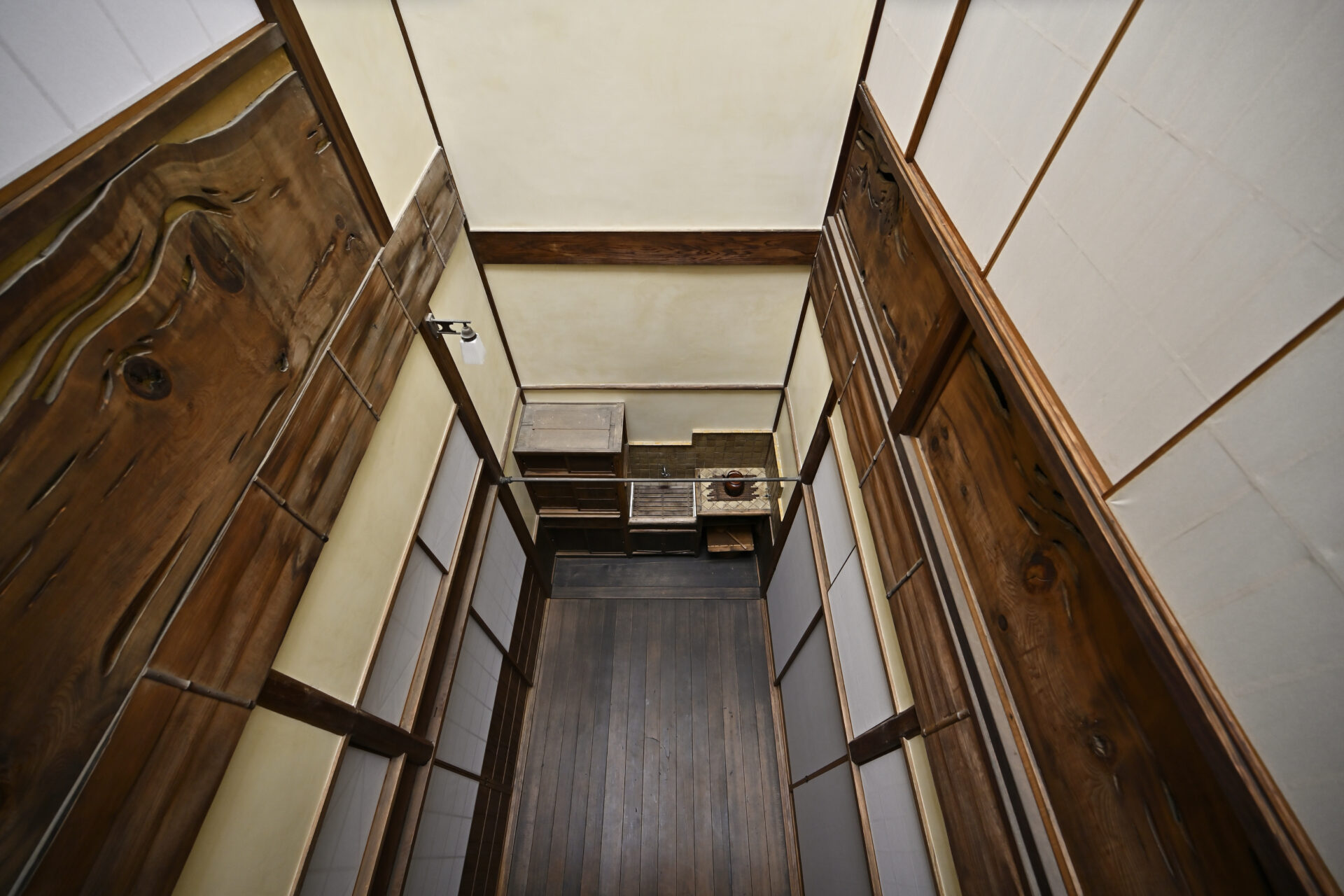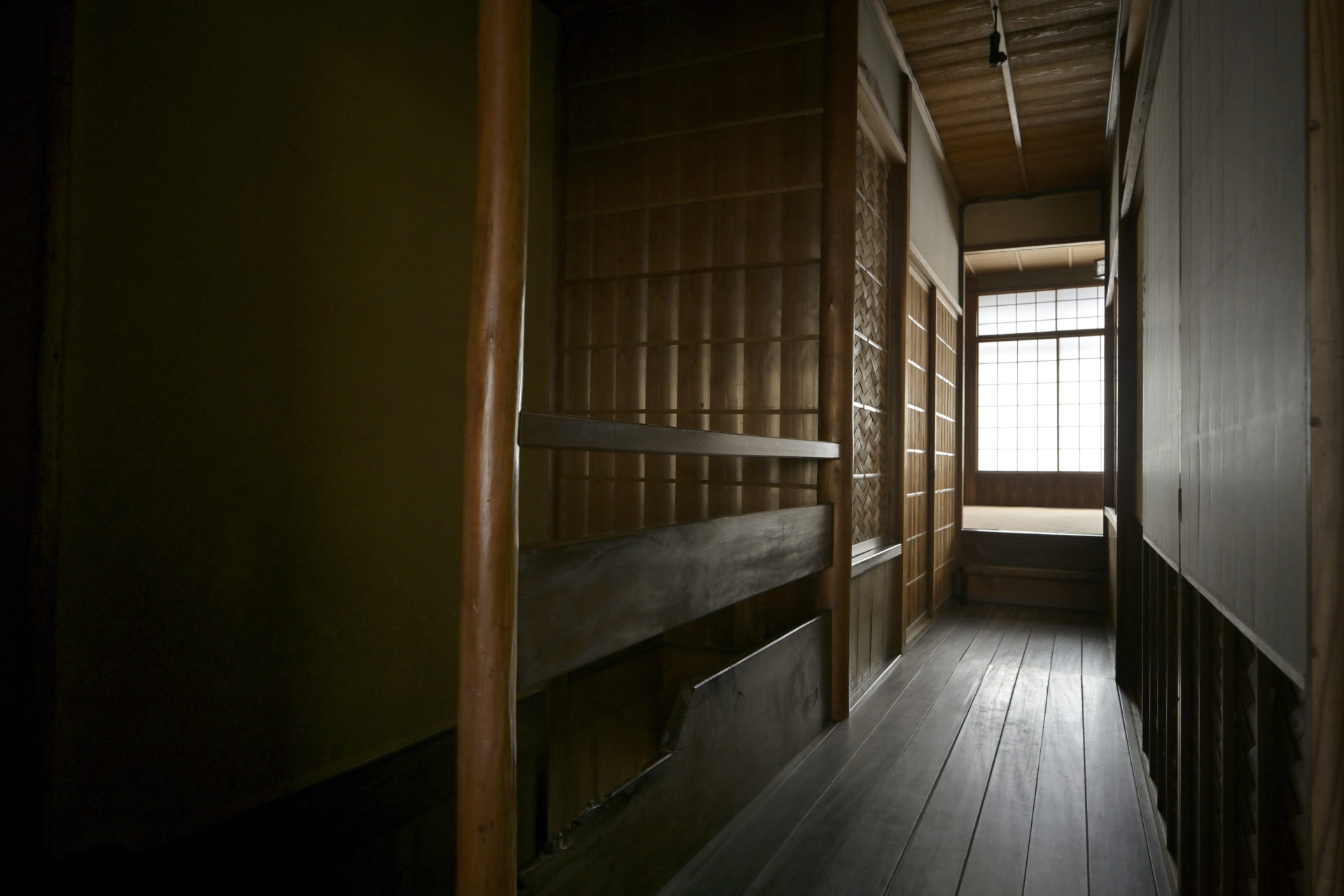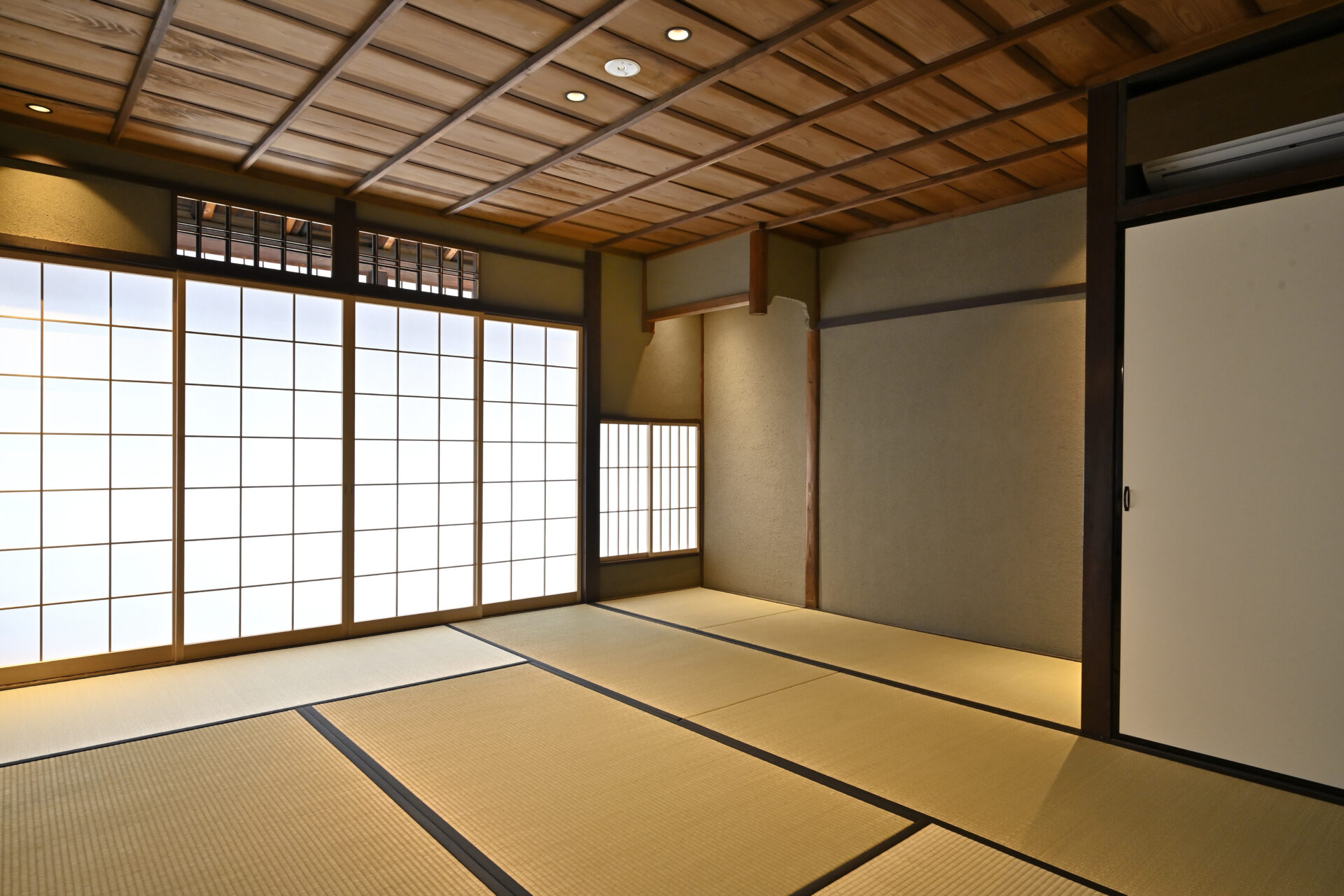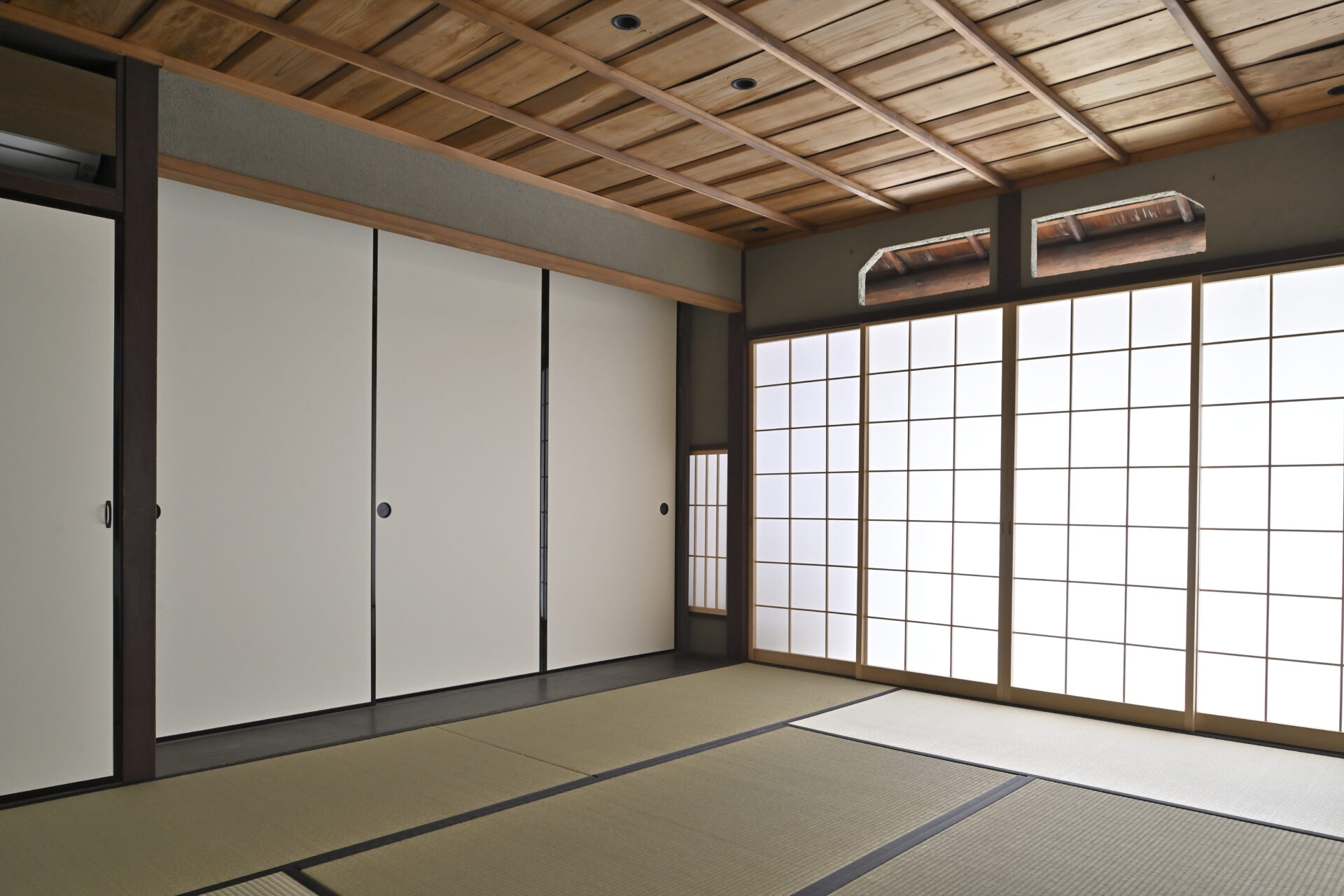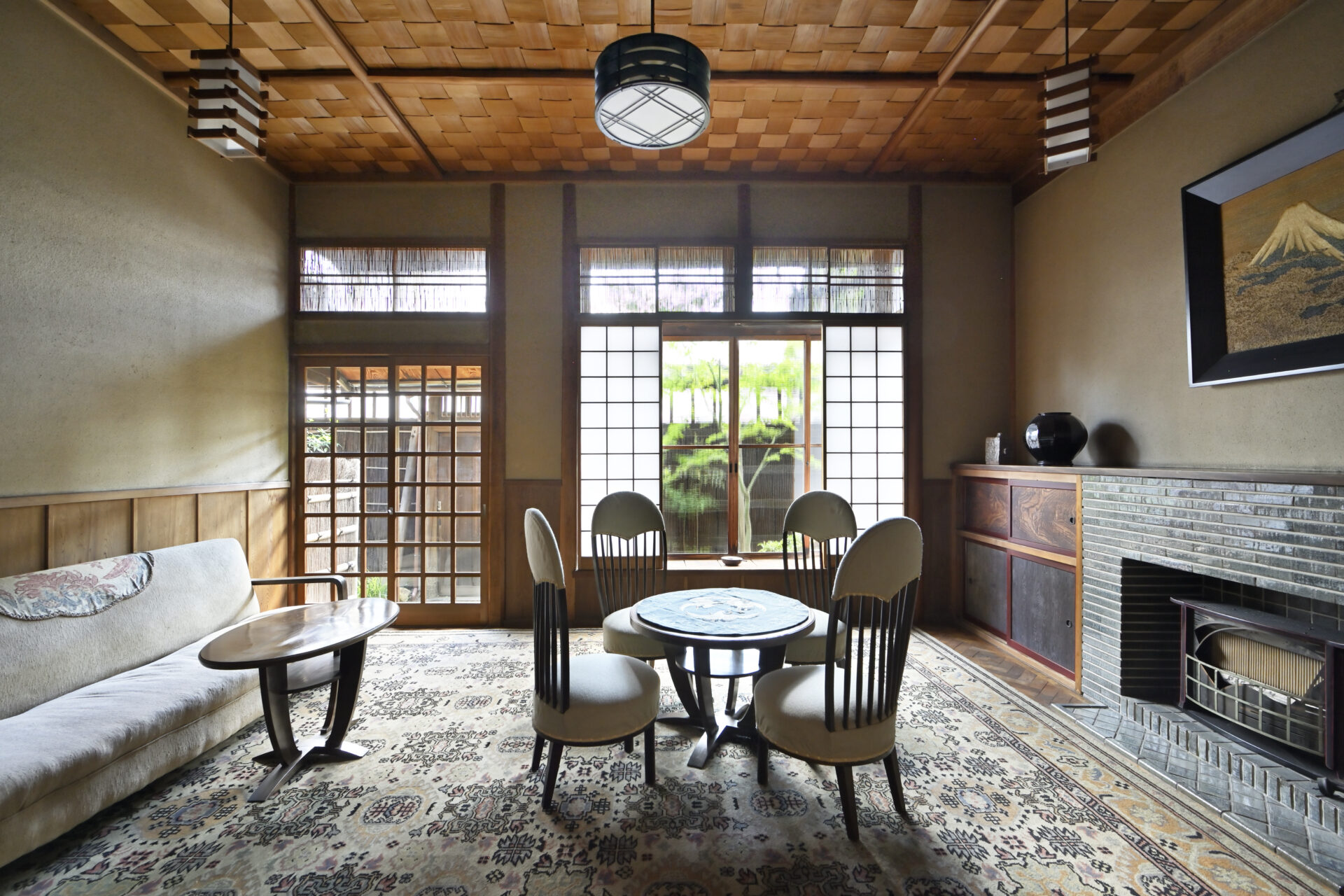
The Fujita Residence consists of east and west sides, which were built during different periods and in different styles. The east side of the house was designed in the traditional machiya (town house) style. The west side, on the other hand, was designed as a reception area to welcome customers visiting the textile weaving store.
The contrasting three rooms, a Western-style room and two Japanese-style rooms with different designs, are connected through the atrium with its skylight window. This audacious spatial construction allows us to glimpse the tastes of the style-conscious Nishijin people of the early Showa era. We can also find many ideas to bring refreshing coolness in Kyoto’s hot and humid summers. For example, sliding doors between the two tatami rooms are replaced with bamboo screens, and high-quality rattan carpet is placed on the tatami mat. These represent the hospitality of the house owner to welcome guests in summer.
First Floor
*Click the photos to see the enlarged image.
Tatami room (rear room)
An eight-tatami room designed in the shoin style. It features a tokonoma (alcove), jibukuro (cupboard) and tsukeshoin (built-in table). Columns are of square cypress.
Tokonoma in the rear tatami room
Tatami room (front room)
A six-tatami room designed in the sukiya-style. Polished natural cedar logs that are slightly convex in shape are used for the columns, and red pine for the tokonoma alcove’s pillar. Nageshi beams run between the columns.
Western-style reception room
The reception room designed in Art Deco style. Items such as the lamps hanging from the wickerwork-pattern ceiling, the tiled fireplace, handmade glass window, the carpet custom-woven to match the room, as well as furniture including chairs and tables are of sophisticated designs, popular in the early Showa era (1926-1989).
Mizuya (tea ceremony preparation room)
Atrium
The atrium space is over 8 meters high. It is assumed that the space was designed to let in sunlight to facilitate quality inspection of textiles, and/or to illuminate the tatami rooms and staircase.
Atrium
The three-story tall wall of the atrium has been recently restored, a process that took six months. The whitewashed clay wall called “Juraku Wall” represents the best of traditional techniques. The driftwood used on the wall was prepared by the house owner, who exhaustively searched for suitable pieces of wood to use. They contrast beautifully against the large whitewashed clay wall. In summer, the shoji paper screens of the skylight window on the third story wall of the atrium are replaced with reed screens.
Corridor
Second Floor
*Click the photos to see the enlarged image.
Tatami mat room
Tatami mat rooms on the second floor were used as living rooms. They have more subdued designs compared to the tatami rooms on the first floor.
